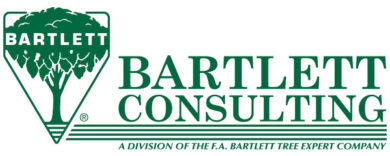Managing Stormwater Runoff
By Katie Navarra
Homes situated on lakefronts or along riversides are among the highest valued properties on the market. Buyers crave the tranquility associated with water and yearn for easy access to water sports.
While waterfront properties are the most prized locations, they are also at the highest risk for pollutants from stormwater runoff. The United States Environmental Protection Agency (EPA) has named stormwater runoff as the nation’s biggest water-quality threat, because it whisks pollutants from streets to lakes and streams via storm drains.
Not only are storm drains the conduit for pollutants entering water sources, the systems in place are not large enough to handle the volume of runoff that is happening. “The existing stormwater infrastructure in place in most cities was not built to handle the amount of runoff that is now occurring,” said Steve Modrow, owner, ASLA, Principal Design, biota Landscape design. “Existing systems in large cities are failing due to age and deferred maintenance.”
Traditionally thought of as a municipal issue, stormwater runoff can be eased with well planned landscape projects. Landscape contractors can play a critical role in encouraging homeowners to consider designs that beautify their homes while simultaneously reducing the impacts of stormwater runoff.
As cities and suburbs become more densely populated, the more critical it is to encourage homeowners to consider landscaping projects that can help alleviate the burden on municipal systems.
Controlling stormwater runoff on residential properties not only helps reduce flooding, it also limits the amount of pollutants that enter a natural waterway due to runoff. “Stormwater runs directly to nearby bodies of water, allowing chemicals and debris to readily enter the water, creating a host of concerns,” said Modrow.
In undeveloped areas with natural vegetation, water soaks into the ground. Today, much of the land in urban and suburban areas is covered with impervious surfaces including streets, parking lots and large roofs. With less surface area to absorb excess water, the extra water — along with any pollutants — flows into nearby lakes, streams and rivers.
Convincing homeowners to invest in landscape projects specifically designed to manage stormwater can be challenging. “The idea of water conservation has not truly resonated with homeowners yet because the perception is that water is unlimited,” said Modrow.
Unfortunately, many people associate water conservation with a “natural” or weedy look. However, “water conservation can be incorporated into any style landscape or architecture,” he said.
And the end result can be beautiful.
Management options
Foundation plantings are the first option homeowners are willing to consider. When planted properly, trees and shrubs are an effective method for limiting runoff. “Foundation plantings are a good place to start, but only a small piece of a larger plan,” said Modrow. “The focus needs to expand and encompass the property border — planting along the perimeter helps slow down any runoff.”
Native plants, grasses, perennials and trees indigenous to a region are the next step to creating a landscape designed to mitigate stormwater runoff. Native plants have evolved to survive in local conditions with minimal care. The plants grow long roots that are ideal for filtering excess water, removing pollutants before returning water to the ground. The longer root structure also increases the plant’s ability to tolerate drought.
Rain gardens are another option. Rain gardens are 200- to 300-square-foot depressions in the ground filled with native plants. Excess water on the property is directed to the rain garden where it sits for a day or two while the plants slowly soak in the water, filter it, and return it to underground water sources.
Homeowners unwilling to trade in manicured lawns and lush gardens can implement water-harvesting practices that address stormwater runoff, provide a water source for maintaining thirsty landscapes, and limit the amount of municipal water used to care for the high-maintenance plantings. A simple system such as a rain barrel or cistern can be used to capture and store runoff for later use. Rain barrels are typically placed at the end of a downspout. A hose or spigot is built into the barrel for easy use.
Depending on the size of the landscape and the amount of water needed, a more elaborate subsurface collection system may be necessary to store enough water to care for the turfgrass and gardens. Check with local and state officials regarding larger rain harvesting systems as regulations vary.
Permeable paving systems are an alternative for areas that cannot be landscaped. Driveways, sidewalks and even patio areas can be designed with permeable paving systems. For example, permeable interlocking concrete pavement is comprised of a layer of concrete pavers separated by joints filled with small stones. The spacers built into the pavers allow water to flow through the joints and into the crushed stones below the pavers. Once directed into the layer of crushed stone, the water is filtered through the soil subgrade.
There are many techniques to manage water on a property — permeable pavers, rain gardens, etc. With a variety of landscape projects available to address stormwater runoff on residential sites, there is an affordable project for every homeowner.
“Water can be managed with simple grading techniques and doesn’t need to be over-thought,” said Modrow. “Simply being aware and taking small steps to create a water responsible yard is better than doing nothing.”
Managing stormwater runoff extends beyond limiting pollutants the reach streams, rivers and lakes. It’s also about conserving a natural resource in danger of depletion. In the United States, water is inexpensive and looked at as a basic right that is provided by the municipality, whereas water is a commodity in many other parts of the world.
“It needs to become the expectation that we conserve water and reuse it and this will require a major shift of what an ideal landscape currently is,” said Modrow.
Katie Navarra is a landscape industry professional based in New York. She is also an accomplished author and freelance correspondent with more than 200 articles to her credit. She can be reached via e-mail at katienavarra@yahoo.com.


